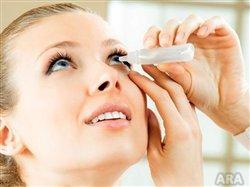Dry eye affects up to 40 million Americans, has many causes, and a variety of symptoms. Those who suffer from dry eye know one thing: that it can be very uncomfortable. Common dry eye symptoms include scratchiness or grittiness, the feeling of a foreign particle in the eye, redness and even excessive reflex watering.
Attacking the cause vs. the symptoms
The underlying factor in dry eye syndrome is inflammation. Reducing inflammation on the surface of the eye and regulating the glands that produce tears are essential to effectively managing dry eye. Artificial tears and rewetting drops may offer temporary relief, but this only treats the symptom.
How the tear film affects dry eye
The tear film has three layers: a water layer, an oil layer and a mucous layer. The mucous layer is located on the eye surface and provides natural lubrication. The next layer is the water layer, produced by a gland under the upper eyelid. Finally, the outermost layer is the oil layer, which is produced by glands along the rim of the eyelid; this layer protects the water layer from evaporating too quickly. When any or all of the layers are not functioning correctly, the tears may become unstable or the tears may evaporate too quickly, resulting in dry eye.
Common causes of dry eye
During winter months, many experience dry eye as humidity levels drop and home heating systems are activated resulting in drier air. This often causes tears to evaporate more quickly. Other leading causes of dry eye include aqueous gland dysfunction. In this situation, tear-producing glands do not produce enough tear volume, or there is less-than-optimal tear composition. Contact lens wearers are particularly susceptible to dry eye as soft lens materials require additional lubrication and a balanced tear film is vital to successful lens wearing. In many cases, medicated eye drops may exacerbate dry eye in contact lens wearers. It is estimated that up to half of contact lens wearers discontinue use due to discomfort often caused by dry eye.
Relieving dry eye
Many doctors and patients reach for an eye drop to provide immediate relief of dry eye. Unfortunately, that immediate relief is temporary. Much has been written about Omega-3s in recent years including its use as an effective treatment of dry eye. As a natural anti-inflammatory, Omega-3s are essential fatty acids that support healthy tear production and keep eyes moisturized. In addition to Omega-3s, other anti-inflammatory ingredients like vitamins A, D3, E, turmeric extract, green tea, and evening primrose oil, can significantly accelerate the time it takes to feel dry eye relief. Many eye care professionals are recommending oral anti-inflammatories as a first step to reduce ocular surface inflammation and regulate gland function without the unwanted side effects noted with topical agents.
Managing dry eye
Leading eye care professionals agree that dry eye is an ongoing issue that cannot be cured, but can be effectively managed. Oral dry eye vitamins feature all natural ingredients, and provide dry eye relief from the inside by reducing inflammation and regulating healthy tear production.
Get a jump on dry eye season this winter
Consult with your eye doctor about an exam to determine the type of dry eye you may have, and for more information on oral anti-inflammatory eye vitamins.




































